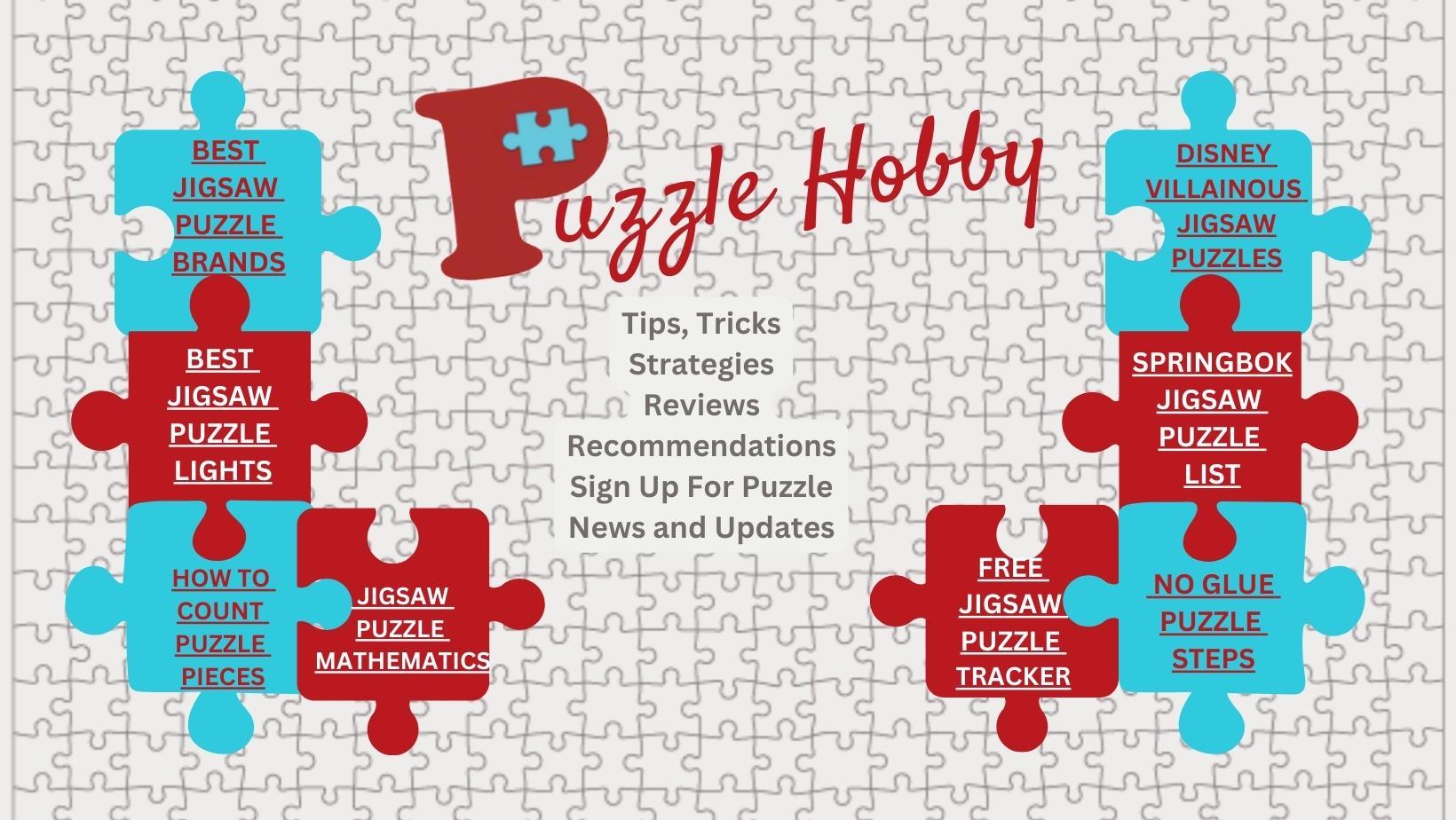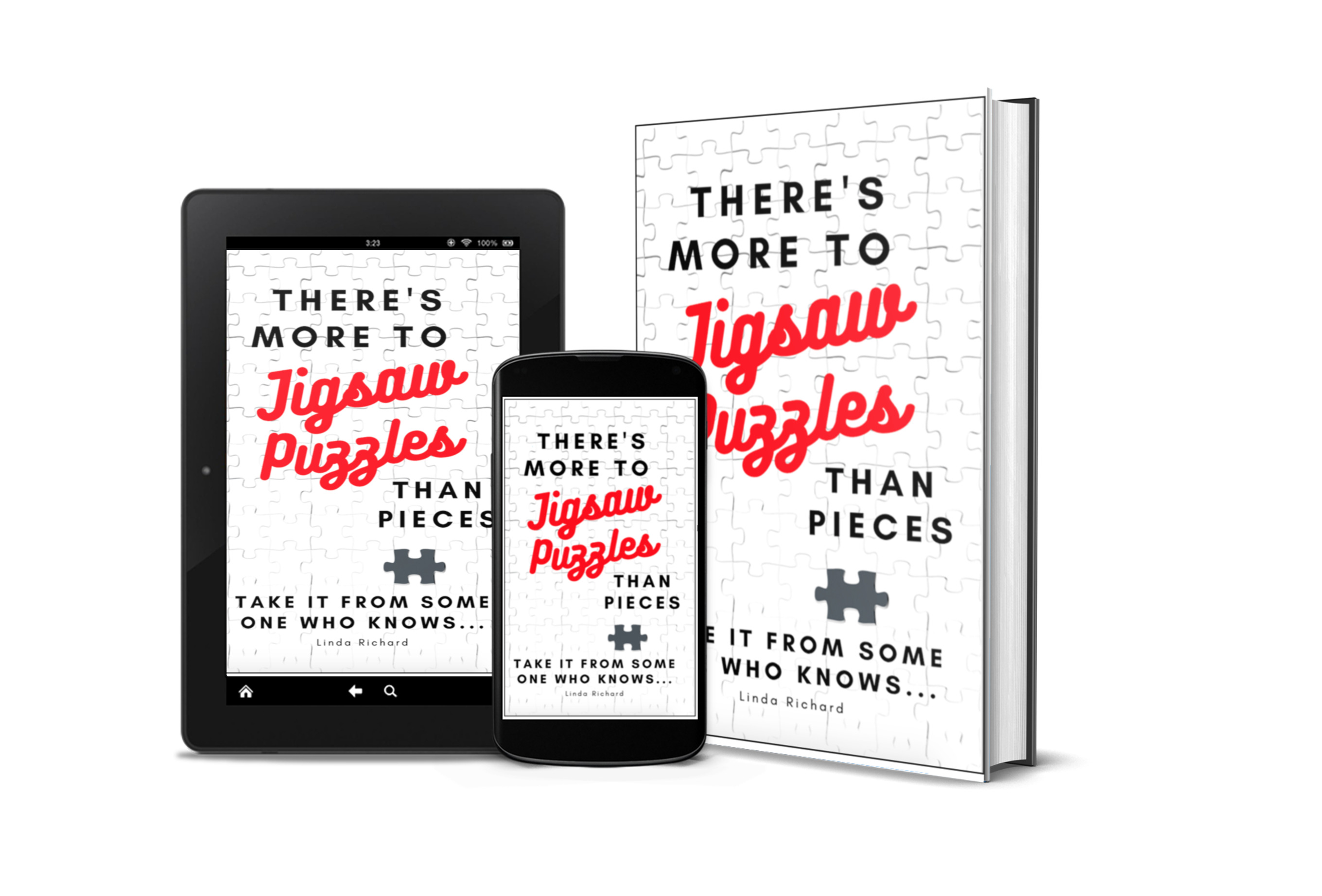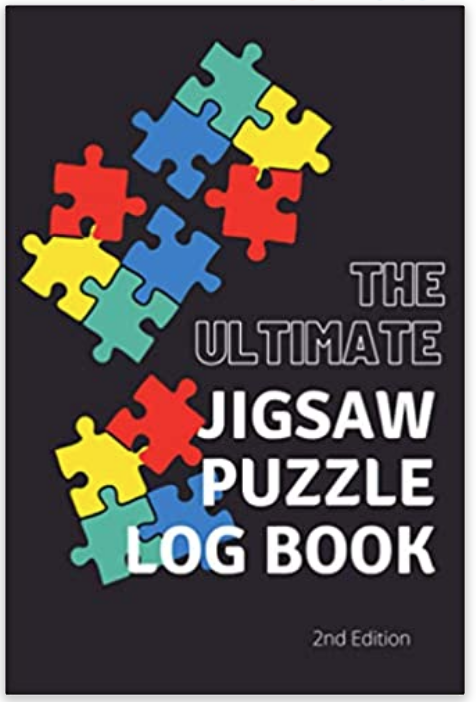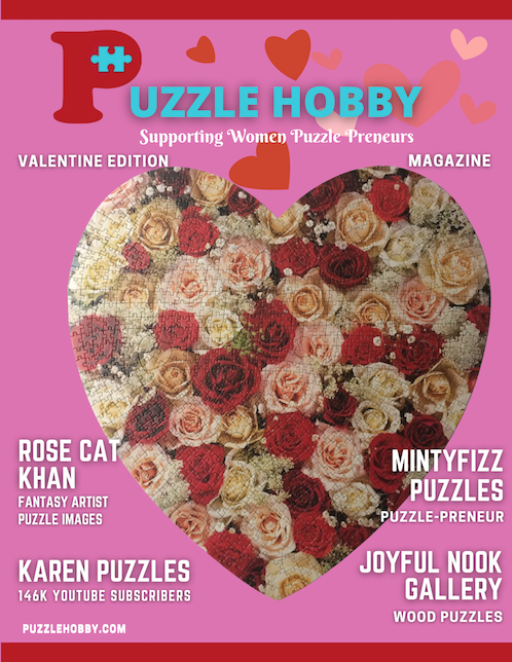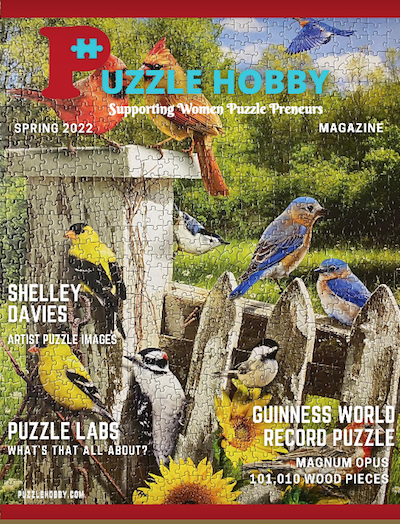 |
 |
- FAQ's 100 Questions
- Best Puzzle Brands
- Activities/Accessories
- Best Puzzle Lights
- Sponsored Reviews
- Sales l Giveaways
- Reap the Benefits
- Get Your Game On!
We are a participant in the Amazon Services LLC Associates Program, an affiliate advertising program designed to provide a means for us to earn fees by linking to Amazon.com and affiliated sites. Also, some of our posts contain other affiliate links and we will be compensated if you make a purchase after clicking on our links.


Jigsaw Puzzle Price Guide
|
Jigsaw Puzzles: An Illustrated History and Price Guide The Jigsaw Puzzle: Piecing Together a History |

|
Watch the YouTube video below to use the full-screen for larger text reading. Tap your 'escape' button to return. OR... See the images in the Youtube video and read the article content from the video below. |
 |
Jigsaw Puzzles: An Illustrated History and Price Guide
1990, 362 Pages by Anne D. Williams
Does your jigsaw puzzle hobby hold a vintage gem or have you located a very rare looking one? Whichever the case may be, you will have a better understanding of the value attached to it by referring to this book.
Keeping in mind the date of the book, you can look beyond that because a great portion of information in the book is based on details that apply to value. Take the following example.
Using Chapter 4, the value of jigsaw puzzles is broken down as follows (quoted from book)
- general criteria for puzzle prices visual appeal and subject matter craftsmanship
- condition
- rarity
- manufacturer and historical interest
- size
- type of market
- state of the market today.....and the list goes on....
So now you can see your 'prize-puzzle' value is based on more than just the age. This is common among collector's items such as stamps, coins, baseball cards etc. The point being shared here is that your puzzle has value based on several conditions.
So where do you find out how much your jigsaw puzzle is worth today? Please scroll further down to the links for more information on that topic.
However, IF you want to review a price guide or look for a particular puzzle within a certain era, Anne definitely has it covered. The book illustrates 750 photos with several in colour. Each photo is categorized into the price guide on page 326 with a dollar figure beside it. Note the value is based on the time of writing but it will give you a 'general' idea.
I think it was important for her to start with the brief history, then a follow up with the major manufacturers in the industry and finally 'How to Develop a Jigsaw Puzzle Collection'. That brought a lot of clarification, solid background and built depth into me as a collector and hobbyist. So now I have been 'schooled' on the subject.
Chapters 5 to 15 inclusive presents the pictures (some sections in colour) of some of the most extremely rare puzzles in the world's collection. It's like viewing an exhibition in a book! I glossed over every picture and read each detail as the eras unfolded before my eyes. So many interesting images, cutting styles and geographical locations where they were produced, were chronologically presented to the reader.
Anne then continues to cover puzzle related items such as postcards, books and games followed by an outlook for puzzles in the future. The last section of her book has lists of the selected Bibliography, American Puzzle Manufacturers and an Index of Puzzle Titles which I find most handy and have referenced often. Personally I found this book to completely cover all my questions regarding the value of jigsaw puzzles. If you are interested in locating this book you may like to try eBay or some of the online stores.
|
|
We have collected a massive list of jigsaw puzzles in numerous categories on our Amazon Store link. It's a quick way to browse most current puzzles and/or specific seasons, accessories and themes. Makes for a terrific one-stop jigsaw puzzle gift giving shopping centre. CLICK HERE |
The Jigsaw Puzzle Book, Piecing Together A History
by Anne D. Williams
This book is by far the most interesting non-fiction and pleasurable read I have had since I cannot remember.
I am simply and continuously amazed at all the different jigsaw puzzles that appear non- stop in our jigsaw puzzle world. BUT, I can tell you this.... Anne sheds a fantastic light on the early history and fact finding timeline of jigsaw puzzles and writes it in such an organized flow which gave me a very long and enjoyable read.
It's rare I do not want a book to end but I think I could have read this one if it continued on to 500 pages or more. She provided many superb interesting details and a plethora amount of information associated with jigsaw puzzles.
I actually felt myself evolving with the history of ancient jigsaw puzzles to the era of the early stages of computer jigsaw puzzles - that's how it flowed - along with excellent images and tidbits of this and that - AND she coated it with a her own personal experiences associated with jigsaw puzzles which attached a human connection to the reader.
Also included were a couple of appendix's and one was of particular interest. It was titled Making Jigsaw Puzzles for Fun or for Sale. It says (quote from book) "It introduces the basics of modern puzzle making, provides an overview of the puzzle industry and lists some additional resources that those who are considering a business venture should consult." It touches on the cutting of wooden jigsaw puzzles and patterns while following up to computerized technologies.
There is also a section with resources for Puzzle Entrepreneurs which provides titles of books and magazines to research should you be interested in this idea.
The second Appendix is filled with several websites for puzzlers. It has links for museums, libraries, antiques, collectables, history, wooden, retailers, custom, virtual, business and trade magazines.
As I have said at the beginning of my review this was like having a pleasant conversation with another jigsaw puzzle hobbyist. I highly recommend reading her book if you would like to take a closer look at your passion.
This is the type of book to take on vacation, a bus trip or an airplane....it is quite delightful and an informative light read.
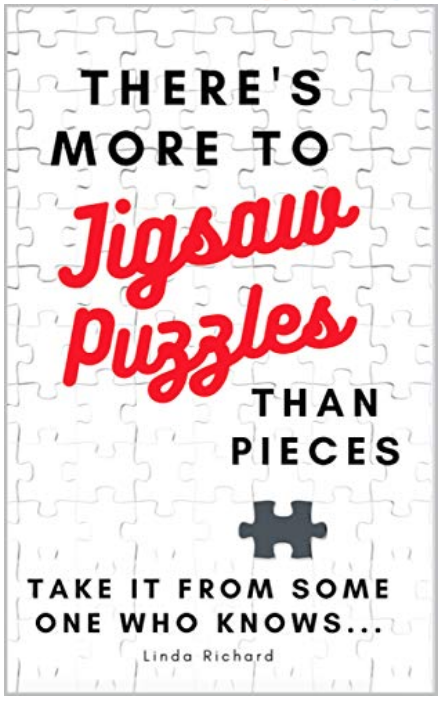 The More To Jigsaw Puzzle Than Pieces a delightful, easy read. It provides loads of valuable advice on 60+ topics relating to jigsaw puzzles plus the Author's years of experience shares extra interesting thoughts. CLICK TO BUY HERE |
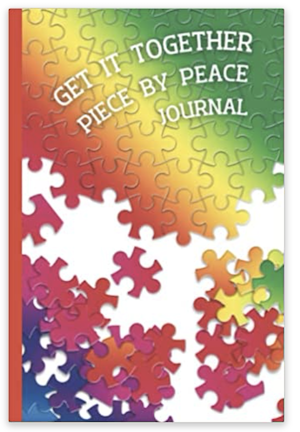 Get It Together Piece By Peace Journal 6"x9" 120 Pages Notes Daily Writing Puzzle Lists CLICK TO BUY HERE |
This book has an Index to make easy access to each puzzle's information. This Ultimate Jigsaw Puzzle Logbook will prove indispensable for all serious puzzlers. Book size: 6" x 9", soft cover, 155 pages. CLICK TO BUY HERE |
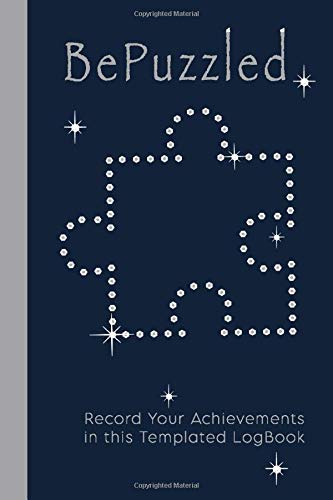 You need somewhere to track all those completed puzzles? This nifty pocket-sized BePuzzled logbook is perfect for you. You are able to record essential information in template form. Book size: 6" x 9". CLICK TO BUY HERE |
About the Author: Anne D. Williams - Jigsaw Puzzle Historian

The Jigsaw Puzzle Book, Piecing Together A History Jigsaw Puzzles An Illustrated History & Price Guide
The following email interview was greatly appreciated. Here Anne shares her present thoughts on jigsaw puzzles and more.
Photo credit: Rick Tucker
1. Do you still assemble jigsaw puzzles?
Yes, of course! I have been doing them since I was a toddler and there’s no reason to stop now.
I don’t buy as many as I used to - I have run out of room. But the senior living community where I am has several common areas where there are always jigsaw puzzles in progress. I rarely pass one of the puzzle tables without stopping to help put some pieces into place.
My favorites have always been the hand-cut wooden puzzles, especially the ones with figure pieces in them. The crafters who made them in the past and those who continue to do so today put a tremendous amount of creativity and artistry into their cutting designs. The best ones incorporate little tricks, such as divided corners and cutting along colored lines, to keep puzzlers on their toes.
I enjoy puzzles with attractive images. In the past I have occasionally slogged though puzzles that are all one color just so I could say I had done it - remember Springbok Editions’ “Little Red Riding Hood’s Hood”? But in my view, that is just too much work for not much gain.
2. What have you been doing for the past 20 years with your life?
When I retired from my day job of teaching, I had more time to concentrate on my other job - researching, documenting, and preserving the history of American jigsaw puzzles - their creators and their users. I spent about five years searching for a permanent home for my lifelong collection of more than 10,000 puzzles. I was delighted, for several reasons, when most of them wound up at the Strong Museum in Rochester, New York.
First, the Museum is the premier destination in North America for anyone who is interested in the history of play and playthings. It houses the National Toy Hall of Fame, which inducted the jigsaw puzzle into its ranks in 2002. The Strong’s displays, Archives and Library are a must visit destination for researchers, scholars, and interested puzzlers. Their Library and Archive collection includes toy trade magazines and reference books, tens of thousands of historic trade catalogs, plus the papers of important inventors and entrepreneurs in the field of play.
Second, the Museum collects all types of jigsaw puzzles - old and new, wood and cardboard, children's and adults' - so I did not have to scatter my collection among places with more limited goals.
Third, the Strong provides great access. The staff has cataloged all the puzzles and is putting photos of them all online, so people worldwide can view them. Of course, they also welcome visitors to the galleries, and (by appointment) to the storage. Best of all, the curators and staff at the Museum are great people - knowledgeable, helpful, and fun. About 7,000 of my puzzles went to Rochester in 2014. Since then I have been continuing my research on the thousands of companies that made jigsaw puzzles over the last 200 years in the United States, then transferring it to the Strong Museum Archives. Organizing reams and reams of notes to make it easier for future researchers to use them is slow work. I think I am now almost three-quarters done.
Additionally, I still get many emails each year with questions from puzzlers around the world, and I take the time to answer each one individually.
3. What is your opinion of the jigsaw puzzle market of today compared to your collections back in the day?
The development of the Internet over the last 25 years, the evolution of laser cutting, and the pandemic craze have all had major impacts of the jigsaw puzzle market.
When I first began serious collecting in the late 1970s, I searched for antique and vintage jigsaws at flea markets, antique malls, and shows, all in the northeastern US. Twenty years later at the advent of eBay and online auctions made it easy to search more widely and to find puzzles from different parts of the country and even from other countries.
Laser cutting of wood jigsaw puzzles started in 1984 at Robert Longstaff Workshops in England. High equipment costs in the early years meant that few other companies followed suit. Wentworth came on the scene in 1994, and Liberty Puzzles in 2005. It has been only
in the last five to eight years that there has been an explosion of new laser-cutting puzzle companies along with a corresponding burst of creativity in images and cutting designs. Etsy is notable as an incubator space for home to dozens of small scale makers of wood puzzles.
On the demand side of the equation, the changes came even more recently. Covid-19 and the ensuing lock downs stimulated an immense interest in stay-at-home entertainment. The public wanted the comfort of a traditional plaything - a puzzle that could be solved, in contrast to the seemingly uncontrollable pandemic. Today it seems a new company is popping up every week with a mouth watering selection of cardboard puzzles. They feature carefully selected images by new artists - photographs are out. It is fairly easy to outsource the manufacturing of a cardboard puzzle. And the Internet and social media are all that is needed for marketing a new innovative design.
4. When it comes to your 'Jigsaw Puzzles, An Illustrated History and Price Guide' book, would you say the value method used there is still applicable these days?
The published values are definitely out of date. After all I wrote that book more than 30 years ago, when the market for collectible and antique puzzles was very different. Values for all categories of puzzles have increased over time, but some have increased more than others. For example, prices for the best of the twentieth century hand-cut wooden jigsaw puzzles (Par, Pastime, Falls) have gone up five-fold, whereas a nineteenth century child’s puzzle may have only doubled in price.
Within a category of puzzles, however, relative values have remained about the same. Among advertising puzzles, for example, a Dr Seuss “Foiled by Essolube” puzzle still brings three times as much as a Procter & Gamble “Professor Quackenbush” puzzle.
5. Do you know which is the most valuable puzzle out there 'today' and what is its value?
The Guinness Book of World Records has listed two records in the past, both in US dollars. 1993 edition of the book, most expensive puzzle:
the limited edition “Dollhouse Village,” a set of 5 large hand-cut and hand-painted linked puzzles, totalling about 3,000 pieces, available from Stave Puzzles for $15,000. If a copy came on the market today, I expect it would sell for much more.
2005 edition of the book, most expensive jigsaw puzzle sold for a charitable art auction to benefit a non-profit organization:
A one-of-a-kind handcrafted wooden puzzle of Golden Retrievers, “The Outing,” made by 92-year-old Rachel Page Elliott of Carlisle, Massachusetts to benefit The Golden Retriever Foundation, for $27,000. The 467-piece puzzle contained numerous figure pieces of birds, dogs and other animals.

Special thanks to Anne D. Williams for her interview, time and jigsaw puzzle wisdom. We thoroughly enjoyed presenting this article for jigsaw puzzle enthusiasts.
- Home
- The Jigsaw Puzzle Book
- Williams Jigsaw Puzzle Price Guide
- Jigsaw-puzzle-Price-Guide
